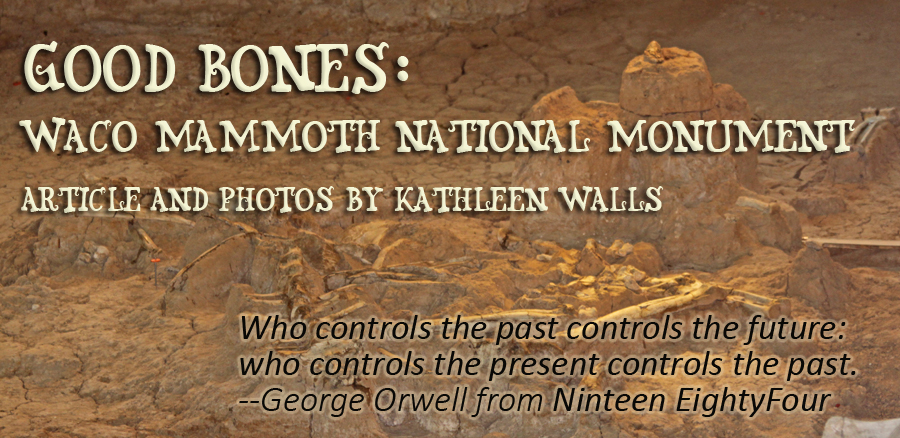
|
On July 10, 2015, President Obama
created three new National Monuments. One of these
sites protect some of the most important paleontological
finds in American History, Waco Mammoth National
Monument.
|
I visited the site a few months ago and was
amazed at the number and condition of the preserved fossils. Our
guide, John, was able to tell us so much about the mammoths
whose fossils we found here.
John gave us a good over view of how the fossils came to
be found and identified. He explained, "They were not Woolly
Mammoths. They were Colombian Mammoths which are about 14 foot
tall at the shoulder and would weigh in at about 20,000 pounds.
"For those of us in Texas, that is about four pickup trucks."
 |
| John explains what we will see
inside |
He went on to tell of the site's discovery
by two young men, Paul Barron and Eddie Bufkin, who were arrow
hunting in the area back in 1976. They weren't having much luck
with the arrowheads but did find a bone they realized was far
too large to be a cow bone that would have been natural here as
this was cattle grazing land. They took it to a geologist, David
Lintz, at Strecker Museum at Baylor University, now Mayborn
Museum (More about the Mayborn here). Lintz was able to identify
the bone as being the femur, or upper leg bone, of a Colombian
mammoth.
 |
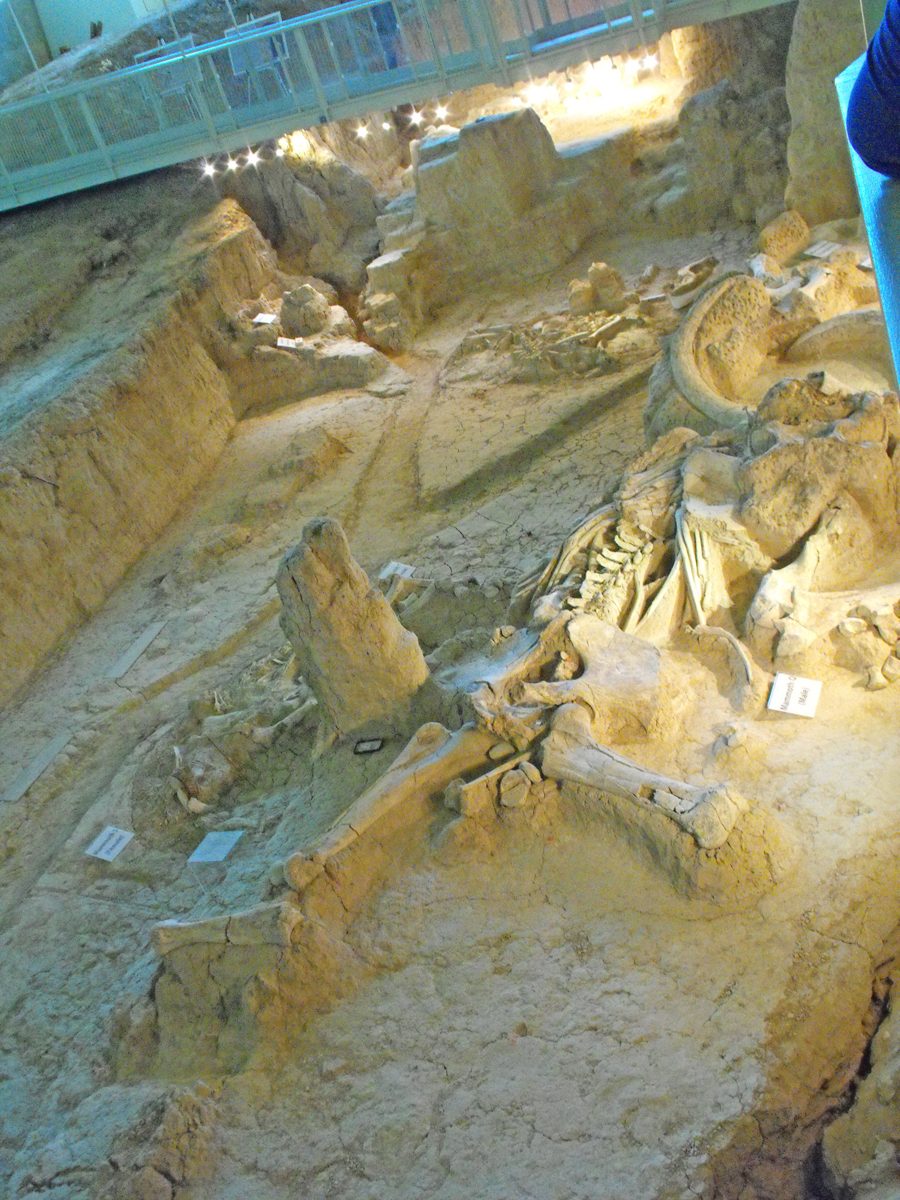 |
| What a leg bone! |
A catwalk lets you get good
views. |
Farther excavations proved that the
earliest fossils were from a nursery herd of about 19 mammoths
that were trapped and died in a flash flood about 65,000 years
ago. A prehistoric camel remains were also caught in the flood.
Two later floods trapped a saber tooth cat, a
bull mammoth, two
juvenile mammoths and an adult female.
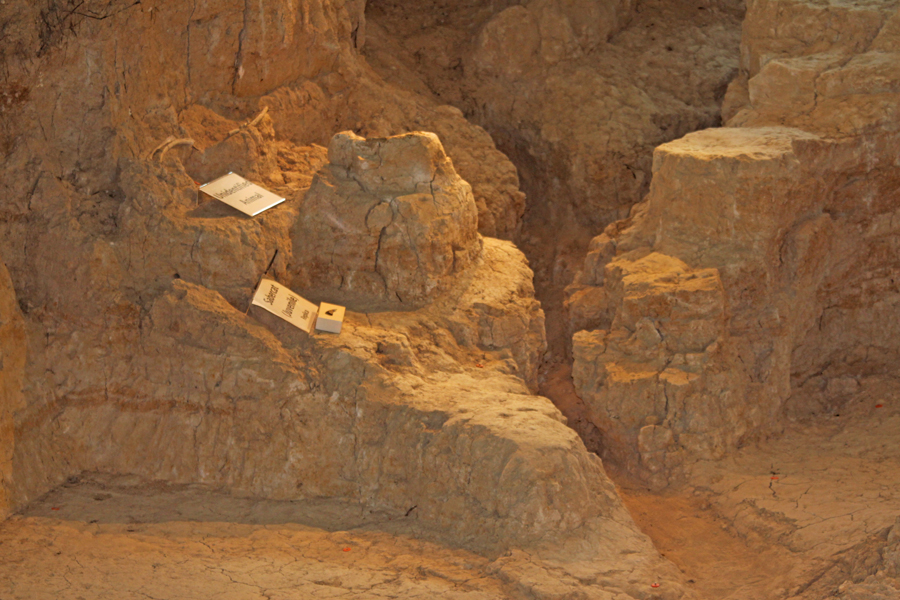 |
| The level of a find tells its
time frame |
The original finds were taken to the museum
to protect them. Later John explained the current building was
constructed. "It's called an in situ fossil bed, meaning the
fossils are just as they were found. The building was built
around them and the walls go down below the water table and are
anchored to the bedrock below."
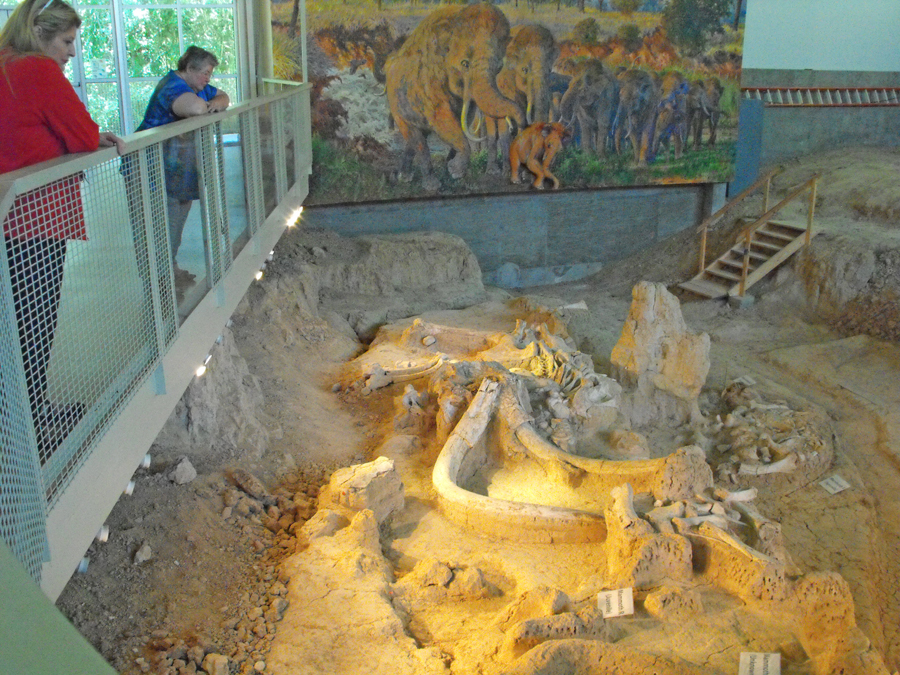 |
| It's like looking into the past |
The first thing we saw inside was a mural
on the wall that shows what the animals looked like in life.
Looking down into the actual fossil bed, we could see the actual
bones. Imagine looking at something buried 65,000 years ago.
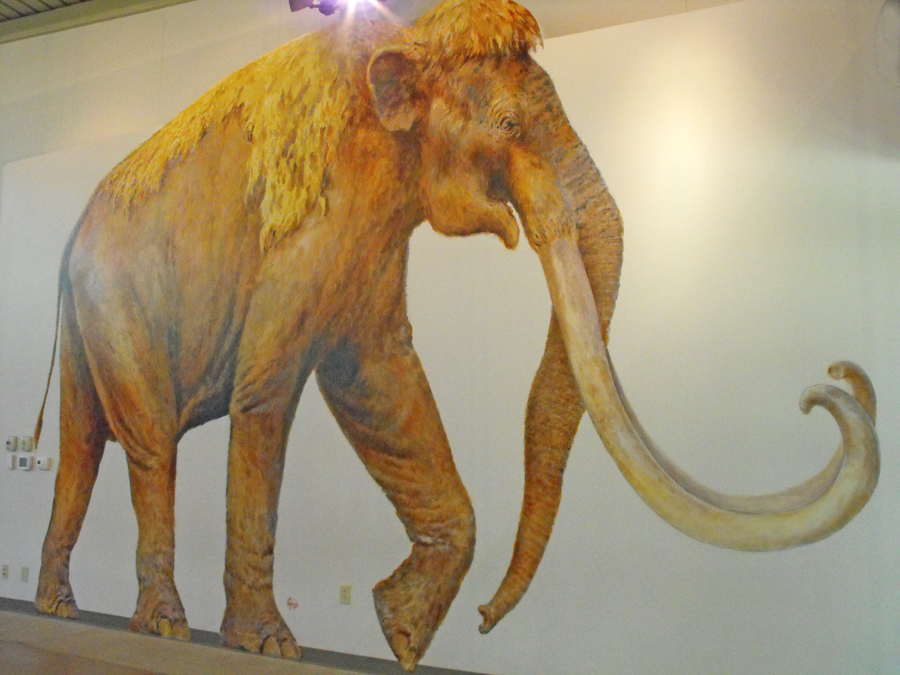 |
| The wall mural |
Since the bones are so well preserved and
have not been disturbed, John was able to interpret what the
animals might have been doing when the flood trapped them. One
female seems to have a young calf on her tusks. Perhaps she was
trying to lift her calf to safety. Since the soil was clay and
the sides steep, it was a futile effort thus the calf's bones
rest here today.
The bones are all labeled for simple
interpretation. John pointed out the levels showing the
difference in the flood dates. He points out one male with his
back legs splayed out behind forcing the mammoth down in a belly
flop showing a flash or rather sudden flooding.
He could show where one male had a injury, a broken rib
with a knot on it showing that it had occurred about a year
before his death possibly in a n injury caused in a matting
season injury. Possibly another male had rammed him in the side
with his tusk causing the injury. He even pointed out the
difference in the male and female pelvic bone structure.
The detail you can see is amazing.
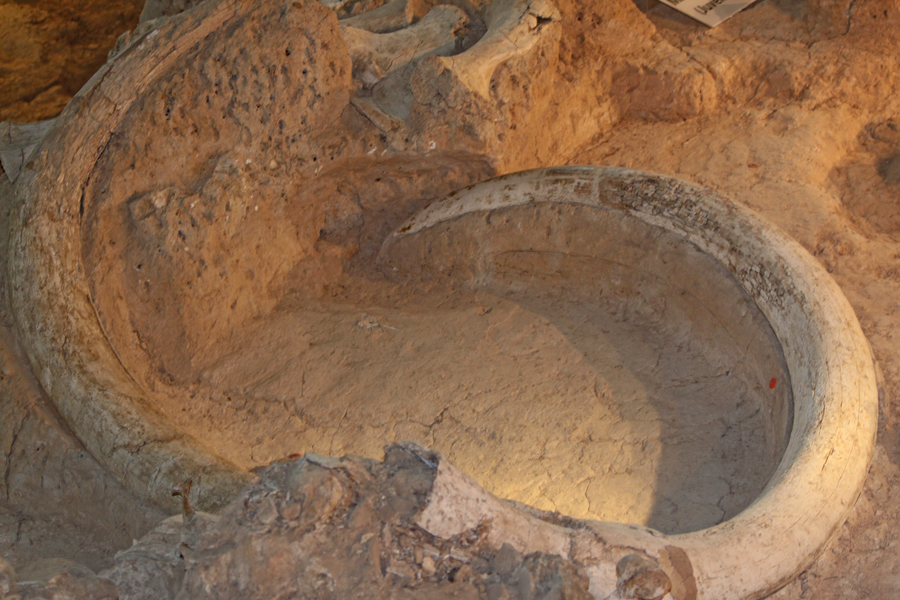 |
| Just the tusks give you a
feeling of the size and power of these huge mammals |
The park offers guided tours every half
hour. This is a great place for adults and older children
interested in prehistoric fossil remains. There are tours for
school groups from pre-k through high school. For the youngest
groups, the Waco Mammoth National Monument's Mighty Molars
program is geared around animal teeth and help younger children
understand the specialized diets of Ice Age animals. For older
groups, there is a simulated fossil dig called the Big Dig where
the kids get to sift through fossil rich gravel and excavate
replica mammoth fossils. Anyone who wishes can dig for free in
their mock dig pit. There is a shady picnic area where you can
enjoy an outdoor lunch break.
What a unique experience for any age.
For
more info:
http://www.waco-texas.com/cms-waco-mammoth
|